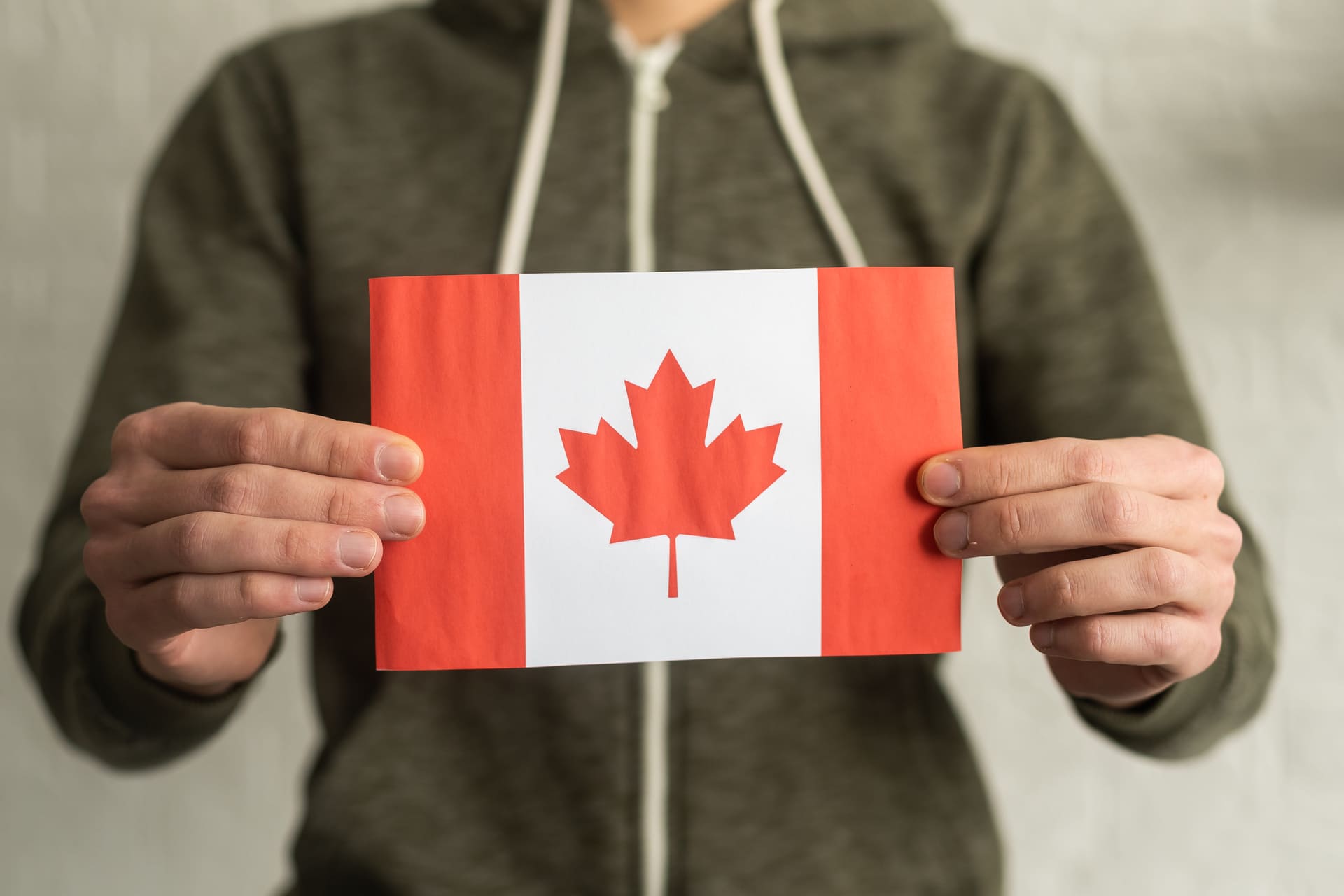
The penalty for illegal immigrants in Canada ranges from administrative removal orders to criminal charges, depending on how they entered and their circumstances. Most face deportation through departure, exclusion, or deportation orders, with varying re-entry restrictions and potential inadmissibility for future applications.
If you’re living in Canada without legal status, the uncertainty can be overwhelming. Every day brings worry about detection, and the consequences of being discovered can permanently separate you from your life here. Without proper legal guidance, you risk making decisions that could bar you from ever returning to Canada legally.
At Kingwell Immigration Law, we understand the complexity of Canada’s immigration system and have helped countless clients navigate these challenging situations. Our experienced team knows that our work goes deeper than just filing an application; the work we do has a real impact on the lives of you, your family, and Canadian communities.
Our immigration lawyer in Toronto provides expert guidance for those facing immigration enforcement and removal proceedings.
Canada’s approach to immigration enforcement involves both administrative and criminal consequences, with the severity depending on the specific circumstances of entry and conduct. Understanding these penalties is essential for anyone facing immigration enforcement action.
The Customs Act requires all individuals to report at a designated port of entry when crossing into Canada. Entering outside an official border crossing is treated as a legal offence and can result in fines of $1,000 to $25,000, possible seizure of your belongings, or even prosecution.
The Canada Border Services Agency (CBSA) has broad authority to investigate and respond to these situations. Depending on the circumstances, they may pursue administrative penalties or recommend criminal charges.
⚠️ Accepting a penalty or settlement with CBSA without legal advice can put your status at risk and may even lead to permanent inadmissibility to Canada.
Many people are surprised at how serious these charges can be. The law requires you to present yourself to Canadian authorities immediately upon arrival, and a failure to do so is a violation regardless of intent. That said, asylum seekers who present themselves without delay are often treated differently, as Canada has obligations under international refugee protection law.
At Kingwell Immigration Law, we understand how stressful these situations can feel. If you or a loved one is facing allegations under the Customs Act, our lawyers can explain your options, protect your rights, and help you avoid lasting consequences.
The Immigration and Refugee Protection Act contains various criminal provisions that apply to different immigration-related conduct.
Section 124 creates offences for misrepresentation, with penalties including fines up to $100,000 and imprisonment for up to five years. The Act also addresses human smuggling under Section 117, which carries penalties ranging from fines to life imprisonment depending on the circumstances.
More commonly, individuals face administrative consequences under the IRPA rather than criminal charges. The legislation empowers immigration officers to issue removal orders and make inadmissibility determinations without requiring criminal prosecution.
This approach allows the immigration system to process cases more efficiently while reserving criminal charges for serious offences involving organized crime, repeated violations, or threats to national security.
The distinction between criminal and administrative enforcement is important for legal strategy. Administrative proceedings focus on immigration status and compliance, while criminal charges require proof beyond a reasonable doubt and engage the full protections of the Charter of Rights and Freedoms.
| Offence Type | Penalty Range | Relevant Legislation | Typical Application |
|---|---|---|---|
| Unauthorised Entry | $1,000-$25,000 fine | Customs Act | Border crossings outside POE |
| Misrepresentation | Up to $100,000 fine + 5 years imprisonment | IRPA s.124 | False documents/information |
| Human smuggling | Fines to life imprisonment | IRPA s.117 | Organizing illegal entry for profit |
| Overstaying Authorisation | Administrative removal | IRPA | Visa violations, permit expiry |

The terminology surrounding unauthorized entry into Canada reflects broader policy debates about how the nation should respond to different types of immigration violations.
⚖️ The federal government and IRCC officially use the term “irregular” to describe asylum seekers who cross the border outside official ports of entry, while opposition parties and some media outlets prefer “illegal” to emphasize the violation of Canadian law. This distinction matters legally because it reflects Canada’s obligations under international refugee law.
The UN Refugee Convention, ratified by Canada in 1967, prohibits countries from imposing penalties on refugees for how they enter, provided they present themselves to authorities without delay and show good cause for their presence.
Article 31 of the Convention recognizes that refugees may have compelling reasons to enter countries illegally and should not be penalized solely for their manner of entry.
The debate over terminology also influences public perception and policy development. Using “irregular” emphasizes that while the entry method violates immigration procedures, it may be legally justified for protection seekers. Conversely, “illegal” focuses on the violation of Canadian sovereignty and law.
From a legal perspective, Kingwell Immigration Law recognizes that the characterization of entry can influence how authorities approach enforcement and what defences may be available to clients.
Our immigration lawyer in Scarborough is available for consultations to discuss your specific situation and explore options for addressing immigration enforcement concerns.
While Canada avoids using the term “illegal” to describe asylum seekers who cross the border irregularly, other categories of individuals may be considered to be in Canada illegally if they no longer hold a valid status under the Immigration and Refugee Protection Act.
Several categories of individuals may be considered to be in Canada illegally under the Immigration and Refugee Protection Act. Understanding these categories helps clarify when enforcement action is likely and what legal options might be available.
💡Consider the case of a student who completed their program in 2017 but remained in Toronto without extending their permit – this person would be considered an illegal immigrant despite their initial legal entry.
Canada’s immigration enforcement system relies primarily on administrative rather than criminal procedures to address violations. The administrative consequences are designed to be swift and efficient while still providing procedural protections for those affected.
The consequences of each type of order extend beyond the immediate requirement to leave Canada. Failure to comply with any removal order transforms it into a deportation order, creating permanent inadmissibility. This transformation happens automatically and cannot be reversed, making compliance with initial removal orders crucial for preserving future immigration options.
| Removal Order Type | Time to Leave | Re-entry Restriction | ARC Required | Compliance Consequence |
|---|---|---|---|---|
| Departure Order | 30 days | None | No | Can return freely |
| Exclusion Order | Immediately | 1-2 years | Yes | Limited bar period |
| Deportation Order | Immediately | Permanent | Yes | Permanent bar |
Inadmissibility determinations under the Immigration and Refugee Protection Act create lasting barriers to entering or remaining in Canada. These determinations go beyond immediate removal and establish formal legal obstacles to future immigration applications. Understanding the grounds for inadmissibility helps individuals assess their long-term prospects for regularising status.
📌 For further reading, see our guide on how to maintain PR status in Canada.
Criminal inadmissibility affects both permanent residents and foreign nationals who have been convicted of offences inside or outside Canada. The Act distinguishes between serious criminality (offences punishable by 10 years imprisonment or actual sentences exceeding six months) and regular criminality (less serious offences). For a deeper breakdown, see our article on ‘what crimes can get you deported from Canada‘.
Permanent residents can only be removed for serious criminality, while foreign nationals face removal for both categories. The impact extends to family members, as inadmissible persons generally cannot sponsor relatives for immigration to Canada.
Misrepresentation inadmissibility results from providing false information or withholding material facts in immigration applications. This ground carries a five-year bar on new applications and affects credibility in all future dealings with Canadian immigration authorities.
⚠️ Even minor omissions or errors can constitute misrepresentation if they influenced the immigration decision, making honest and complete disclosure essential in all applications.

The enforcement process in Canada follows a structured approach designed to identify, investigate, and remove individuals who violate immigration law. Understanding this process helps individuals recognize critical decision points and opportunities for legal intervention.
📌According to Statistics Canada, the CBSA prioritizes enforcement action against individuals who pose threats to public safety or national security, followed by those with criminal records or repeated immigration violations.
International and Canadian law provide specific protections for asylum seekers that can limit the penalties for irregular entry. These protections recognize that refugees may be compelled to enter countries illegally due to persecution or other urgent circumstances beyond their control.
The UN Refugee Convention Article 31 prohibits signatory countries from imposing penalties on refugees for illegal entry, provided they present themselves to authorities without delay and show good cause for their presence. Canada’s implementation of this principle appears in Section 133 of the Immigration and Refugee Protection Act, which requires criminal charges related to entry violations to be stayed while refugee claims are being processed. This protection extends only to genuine asylum seekers who promptly make protection claims.
The Safe Third Country Agreement with the United States creates additional complexity for asylum seekers. Under this agreement, protection claimants who arrive at official border crossings from the U.S. are generally turned back, as the U.S. is considered a safe country for refugee protection. However, the agreement contains exceptions for unaccompanied minors, family members of Canadian citizens or permanent residents, and individuals not subject to the agreement when entering at irregular crossing points.
✔️At Kingwell Immigration Law, we successfully appealed a Pre-Removal Risk Assessment decision to the Federal Court for applicants from Israel who claimed risk as an Arab-Israeli LGBT couple, resulting in IRCC being ordered to reconsider their application.
Several pathways exist for individuals to transition from illegal to legal status in Canada, though eligibility requirements and success rates vary significantly among programs. Understanding these options helps individuals make informed decisions about their circumstances and prospects for remaining in Canada legally.
⚖️ The success of regularisation applications often depends on the strength of an individual’s establishment in Canada and the specific circumstances that led to their irregular status.
When individuals become subject to exclusion or deportation orders, they typically require an Authorization to Return to Canada before being eligible for any future immigration applications. The ARC process serves as a gatekeeping mechanism to ensure that individuals who violated Canadian immigration law demonstrate rehabilitation and compliance before being allowed to return.
ARC applications require applicants to provide detailed explanations for their previous non-compliance with Canadian immigration law. Immigration officers assess these applications based on several factors: the seriousness of the original violation, the length of time since the violation occurred, evidence of rehabilitation or changed circumstances, and the reasons for wanting to return to Canada.
The burden of proof rests entirely on the applicant to demonstrate why they should be allowed to return despite their previous violations.
Success factors for ARC applications include accepting responsibility for previous violations, demonstrating stable circumstances in the country of residence, providing compelling reasons for the return request, and showing genuine rehabilitation where applicable.
Common refusal reasons include insufficient explanation of previous non-compliance, failure to demonstrate changed circumstances, and inadequate evidence supporting the reasons for returning to Canada.

Immigration detention serves as a mechanism to ensure individuals comply with immigration proceedings and removal orders while addressing public safety concerns. The system operates under the authority of the CBSA, with oversight from the Immigration and Refugee Board to ensure detained individuals receive fair hearings and regular reviews.
⚠️ Immigration detention can continue indefinitely if the grounds for detention persist, making legal representation essential for challenging detention and securing release conditions.
According to CBSA and independent reports, Canada detains around 6,000 to 8,000 individuals annually on immigration grounds, although in the most recent fiscal year, the number fell to about 4,000. Most detainees spend only a few days or weeks in custody, but a small number remain for much longer periods.
Minors are detained only in exceptional cases and are always held in designated immigration holding facilities, separate from the adult criminal system.
Alternatives to detention include release on conditions such as reporting requirements, surrender of documents, posting of bonds, or supervision by community organizations. These alternatives recognize that detention should be used only when necessary and that less restrictive measures may adequately address the statutory concerns in many cases.
Our immigration lawyer in Mississauga has extensive experience representing clients in detention reviews and securing releases on appropriate conditions.
Individuals with criminal records who wish to enter or remain in Canada may need to overcome criminal inadmissibility through rehabilitation or record suspension processes. These mechanisms recognize that past criminal conduct should not permanently bar individuals from immigration benefits if they have demonstrated genuine rehabilitation.
Criminal rehabilitation under Canadian immigration law allows individuals to overcome inadmissibility based on criminal convictions. The process requires demonstrating that sufficient time has passed since the completion of the sentence, that the individual has been rehabilitated, and that they are unlikely to commit further offences.
⚖️ Individual rehabilitation applications are required for serious criminality, while some individuals may be deemed rehabilitated automatically after ten years for less serious offences.
Record suspensions (formerly called pardons) under Canadian criminal law seal criminal records for offences committed in Canada, making them inaccessible for most purposes, including immigration applications. However, record suspensions do not automatically overcome immigration inadmissibility, and individuals may need both a record suspension and criminal rehabilitation to fully address their criminal history for immigration purposes.
The timeline for rehabilitation eligibility depends on the nature and severity of the criminal offence. For serious criminality (offences punishable by 10 or more years imprisonment), individuals must wait five years after completing all aspects of their sentence before applying for rehabilitation.
For less serious offences, the waiting period is five years, but individuals may be deemed rehabilitated automatically after ten years without the need for an application.
✔️ We successfully helped a refugee claimant from Albania whose case at the Refugee Protection Division was affected by a wrongful criminal conviction, resulting in the Federal Court ordering redetermination of his claim.
The success of rehabilitation applications depends heavily on the quality and comprehensiveness of supporting documentation. Applications must include court records, police certificates, evidence of rehabilitation efforts, and compelling personal statements explaining the circumstances of the offence and subsequent rehabilitation.
Professional legal assistance is typically essential for preparing successful applications, as the documentation requirements are extensive and the standards for approval are high.

Understanding your rights during encounters with immigration enforcement can significantly affect the outcome of your case. While individuals without legal status have limited rights compared to citizens and permanent residents, important protections still apply during enforcement proceedings.
📌 When interacting with CBSA officers, remain calm and respectful while clearly stating your intention to exercise your right to legal counsel before answering questions about your immigration status.
The manner in which individuals interact with enforcement officers can influence both the immediate outcome and future proceedings. Cooperation and honesty are generally advisable, as attempts to mislead or obstruct enforcement efforts typically worsen outcomes.
Documentation of enforcement encounters can be valuable for future legal proceedings. Individuals should attempt to obtain copies of all documents served by enforcement officers and maintain records of all interactions with immigration authorities. This documentation can be vital for challenging enforcement actions or preparing applications for relief.
Certain situations require immediate legal intervention to protect immigration status and prevent irreversible consequences. Recognizing these red flags can mean the difference between successful resolution and permanent removal from Canada.
Early intervention significantly improves outcomes in immigration enforcement cases. Conversely, delayed legal intervention may result in missed deadlines, waived rights, or foreclosed options that could have prevented removal.
The complexity of immigration enforcement requires specialized expertise that general practice lawyers may not possess. Immigration law involves federal legislation, regulations, international treaties, and rapidly evolving policies that affect enforcement priorities and available remedies.
✔️ Our immigration counsel brings not only legal knowledge but also strategic insight into how different approaches are likely to be received by immigration authorities and tribunals.
Kingwell Immigration Law provides comprehensive legal services for individuals facing immigration enforcement and removal proceedings. Our practice encompasses the full range of urgent immigration matters, inadmissibility issues, and appeals to Federal Court.
We are trusted by people just like you from Canada and around the world who require support in immigration law matters. We have defended our clients’ right to stay in Canada, helped them build a foundation to support relatives and loved ones in coming to Canada, and have acted as advocates in situations where hope seems lost.
We believe every case is unique; we will never apply a “one size fits all” approach – we get to know each specific person and their situation, so we can provide tailored, innovative, and efficient solutions that help them achieve their goals.
If you are facing immigration challenges, reach out today to our team online or call 416.988.8853 to speak directly with a lawyer who can help protect your future in Canada.

Yes, CBSA officers have broad arrest powers and can apprehend individuals at their workplace, residence, or other locations without a warrant if they have reasonable grounds to believe immigration violations have occurred. However, they must respect Charter rights and follow proper procedures during arrests.
You have the right to ask for identification and to see any warrant before allowing entry to your home. You should clearly state that you wish to exercise your right to legal counsel before answering questions about your immigration status, and contact an immigration lawyer immediately.
Canadian-born children are Canadian citizens and cannot be deported. However, practical considerations about family separation may influence immigration decisions, and the best interests of Canadian children can be a factor in Humanitarian and Compassionate applications.
Criminal charges can worsen your immigration situation by creating additional grounds for inadmissibility and potentially justifying immigration detention. The charges may also affect eligibility for certain forms of relief, making it crucial to coordinate criminal defence with immigration law strategies.
Marriage to a Canadian citizen does not automatically stop removal proceedings, though it may provide a pathway to legal status through spousal sponsorship. The timing of marriage relative to enforcement action and the genuineness of the relationship will be scrutinized by immigration authorities.